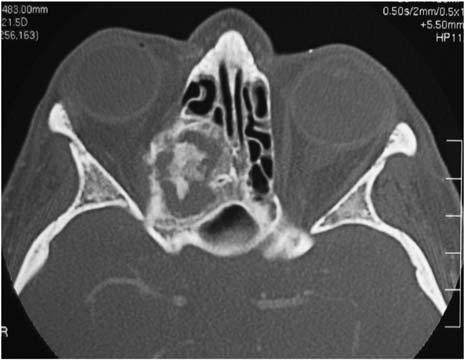
1. Introduction
Craniofacial fibrous dysplasia (CFD) is a rare bone disorder that affects the face and skull. It is caused by a genetic mutation that results in the abnormal growth of fibrous tissue in the bone. The fibrous tissue replaces normal bone, making it weaker and more prone to fractures. CFD can cause a variety of symptoms, including facial asymmetry, pain, and impaired vision. There is no cure for CFD, but treatment options are available to help manage the symptoms and complications.
2. Causes
The exact cause of CFD is unknown, but it is believed to be caused by a genetic mutation. The mutation affects the GNAS gene, which is responsible for regulating the production of a protein that controls cell growth and differentiation. The mutation causes the cells in the bone to grow abnormally, resulting in the formation of fibrous tissue.
3. Epidemiology
CFD is a rare disorder, with an estimated incidence of 1 in 50,000 people. It is more common in women than men. CFD can occur at any age, but it is most commonly diagnosed in children and young adults.
4. Symptoms
The symptoms of CFD can vary depending on the severity of the disease and the bones that are affected. Some common symptoms include:
- Facial asymmetry
- Pain
- Impaired vision
- Hearing loss
- Nasal obstruction
- Tooth problems
- Bone deformities
- Pathologic fractures
5. Pointers to Diagnosis
The diagnosis of CFD is typically made based on a physical examination, medical history, and imaging tests such as X-rays, CT scans, and MRIs. A biopsy of the affected bone may also be performed to confirm the diagnosis.
6. Natural History
The natural history of CFD is variable. Some people with CFD have no symptoms and require no treatment. Others may experience progressive bone deformities and complications, such as fractures, pain, and impaired vision. The severity of the disease and the risk of complications can vary from person to person.
7. Treatment Options
There is no cure for CFD, but treatment options are available to help manage the symptoms and complications. Treatment options may include:
- Surgery: Surgery may be used to correct bone deformities, relieve pressure on nerves and blood vessels, or improve vision.
- Medication: Medications such as bisphosphonates may be used to slow the growth of fibrous tissue and reduce the risk of fractures.
- Radiation therapy: Radiation therapy may be used to shrink tumors or relieve pain.
- Pain management: Pain management may include medications, physical therapy, and other therapies.
8. Timing of Surgery
The timing of surgery for CFD is individualized and depends on the severity of the disease and the patient’s symptoms. Surgery may be performed early in the course of the disease to prevent complications, or it may be delayed until the patient is older and has reached skeletal maturity.
9. Recovery and Rehabilitation
Recovery from surgery for CFD can vary depending on the extent of the surgery. Some people may be able to return to their normal activities within a few weeks, while others may need several months to recover. Rehabilitation may include physical therapy, occupational therapy, and speech therapy.
10. Outcome
The outcome of CFD is variable and depends on the severity of the disease, the patient’s age, and the treatment options chosen. Most people with CFD live normal lives with few complications. However, some people may experience progressive bone deformities and complications, such as fractures, pain, and impaired vision.
11. Follow-up
People with CFD will need to be monitored by a healthcare provider on a regular basis to check for changes in the disease and to manage any complications. Regular follow-up may include physical examinations, imaging tests, and blood tests.
12. Recent Advances in Treatment of Fibrous Dysplasia
- Denosumab is a medicine that’s used to treat fibrous dysplasia, a rare condition where bones grow abnormally. This medication targets a specific protein involved in bone breakdown and helps slow this process.
- Clinical trials have shown that Denosumab can reduce pain, strengthen the bones, and slow the growth of bone abnormalities in fibrous dysplasia. The recommended dose of denosumab for the treatment of fibrous dysplasia is 60 mg injection once every three months.
- While Denosumab helps manage fibrous dysplasia symptoms, it’s not a cure. Some people may experience side effects, including low blood calcium, overactive parathyroid glands, and an increased risk of fractures.
- The FDA approved Denosumab for treating adults with fibrous dysplasia in 2013.Currently, it’s not approved for children with this condition.
13. Disclaimer
This website provides general information about healthcare topics to help individuals make informed decisions and connect with medical professionals for support. However, it is important to note that the information on this website is not a substitute for professional medical advice, diagnosis, or treatment. It is recommended to always seek the advice of a qualified healthcare provider for any medical questions or concerns. Reliance on any information provided on this website is solely at your own risk. If you are interested in scheduling an appointment with a qualified specialist in Pediatric neurosurgery, you can contact us via phone or message on Telegram / WhatsApp at +91 8109 24 7 365.
